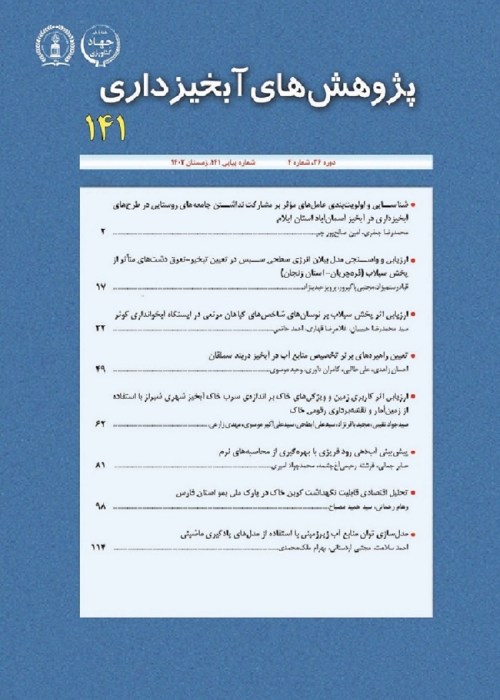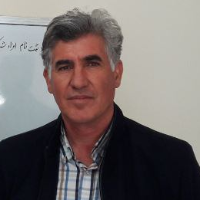Identification and Prioritization of Effective Factors on Preventing Participation of Rural Societies in Watershed Management Plans in Asman Abad Watershed of Ilam Province
The participation of villagers in watershed management activities has been paid attention to by the country's planners. Surveys have shown that the amount of people's participation was not as expected. This research is aimed at identifying the socio-economic characteristics of local communities, identifying indicators that are effective in reducing barriers and increasing public participation in the implementation of natural resources and watershed projects, understanding the expectations and needs of the local community, and finally providing scientific and technical solutions with the aim Increasing the amount of public participation was done in Asman Abad area of Cherdavel city.
In this research, the indicators influencing the non-participation of villagers in watershed management activities were determined and categorized based on four economic, social, design-executive and educational-promotional indicators and with 12 sub-indices. The necessary information in this research was collected in the form of a survey and using questionnaires, interviews and numerous meetings with community members and local experts. To determine the sample size from Cochran's correlation, SPSS software was used for data analysis and Cronbach's alpha was used to check the validity of the questionnaire.
The results obtained from this research showed that in the Asman-Abad watershed, economic, design and implementation indicators played a greater role in people's non-participation than educational-promotional and social indicators. From the perspective of experts, the sub-index of ignoring people's income as a direct economic incentive and not paying attention to non-governmental organizations were the most and least important in people's non-participation, respectively, with an average rating of 9.35 and 3.69. From the point of view of the local communities, the sub-indices of ignoring the people's income as a direct economic incentive and not trusting the results and effectiveness of the projects are the most and the least important, respectively, with an average rating of 8.16 and 5.23 in the non-participation of the people. they had. The general result of the survey of local communities indicated that the factors of implementing multi-purpose projects and considering the interests of watershed residents can be the basis for trust and attracting active participation of people in watershed management projects.
Conclusion and Suggestions:
In Asman Abad watershed, the prioritization of indicators affecting people's non-participation in watershed projects showed that economic and design-executive indicators played a greater role compared to educational-promotional and social indicators. Also, the results of the weights obtained from the Friedman test for ranking the sub-indices affecting people's non-participation showed that two sub-indices - ignoring the people's income as a direct economic incentive and not paying attention to the opinions and suggestions of the watershed residents in the different stages of needs assessment, design and the implementation of watershed projects, from the point of view of both groups, were in the first four priorities and were relatively more important in the non-participation of rural communities. Therefore, according to the findings of the research in order to create or improve people's participation in watershed management projects in the studied area, it is suggested that before the implementation of natural resources and watershed management projects, in relation to the existing problems, the conditions of the region and even the necessity of implementing the project Collect the points of view of the local community. Attracting the opinion of the residents of the watershed with the aim of cooperation in the implementation, protection, restoration and maintenance of projects, balanced and equal use of natural resources by the beneficiaries, appropriate use of the economic, social and technical abilities and capacities of the residents and the local community in creating and strengthening the participation of the local community is very effective Is.
- حق عضویت دریافتی صرف حمایت از نشریات عضو و نگهداری، تکمیل و توسعه مگیران میشود.
- پرداخت حق اشتراک و دانلود مقالات اجازه بازنشر آن در سایر رسانههای چاپی و دیجیتال را به کاربر نمیدهد.



